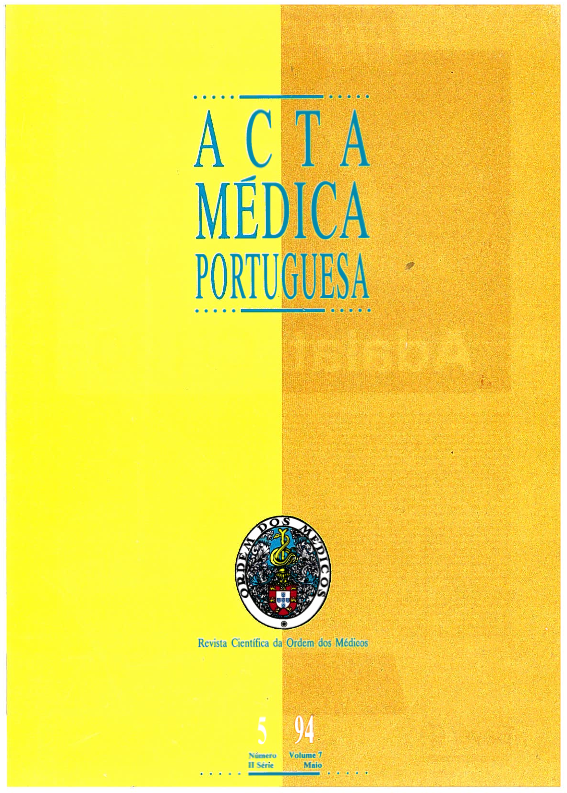Neurocysticercosis. An imaging analysis of 35 cases.
DOI:
https://doi.org/10.20344/amp.2902Abstract
Neurocysticercosis (NCC) is the most frequent parasitic disease of the central nervous system. Other Portuguese works showed it to be endemic in the north of our country. The purpose of this paper is to aid the characterization of NCC in the geographic area of our Institution. We retrospectively reviewed the findings of computed tomography (CT) in 35 patients with NCC, including 23 adults and 12 children. There was no significant sex predominance in adults, however, in children the female/male ratio was 2. We found important clinical and radiological differences between adults and children. In the pediatric age group, the active forms were characteristically solitary or scarce inflammatory lesions. This radiologic picture was associated with neurologic focal signs. In these cases, a trial with anticysticercoid drugs is important to settle the diagnosis and avoid brain biopsy. Almost all of our cases (94%) were parenchymatous forms. This can be explained, in part, by the limitations of CT in the ventricular and cisternal compartments. Magnetic resonance is the ideal method in these locations. About half our patients (49%) were of African origin, most of them immigrants from the former Portuguese colonies where NCC is endemic.Downloads
Downloads
How to Cite
Issue
Section
License
All the articles published in the AMP are open access and comply with the requirements of funding agencies or academic institutions. The AMP is governed by the terms of the Creative Commons ‘Attribution – Non-Commercial Use - (CC-BY-NC)’ license, regarding the use by third parties.
It is the author’s responsibility to obtain approval for the reproduction of figures, tables, etc. from other publications.
Upon acceptance of an article for publication, the authors will be asked to complete the ICMJE “Copyright Liability and Copyright Sharing Statement “(http://www.actamedicaportuguesa.com/info/AMP-NormasPublicacao.pdf) and the “Declaration of Potential Conflicts of Interest” (http:// www.icmje.org/conflicts-of-interest). An e-mail will be sent to the corresponding author to acknowledge receipt of the manuscript.
After publication, the authors are authorised to make their articles available in repositories of their institutions of origin, as long as they always mention where they were published and according to the Creative Commons license.









